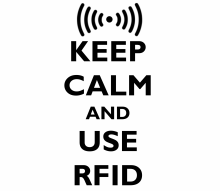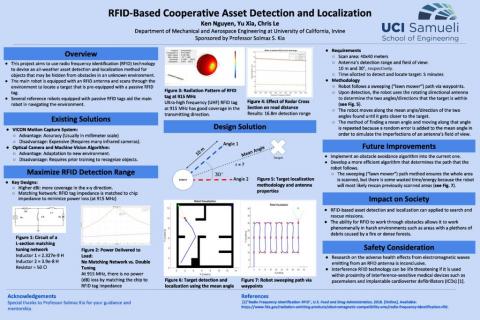RFID-based Cooperative Asset Detection and Localization
Background
The purpose of this project is to introduce passive RFID technology for target detection and localization. Presently, robots are not constrained to hard-coded algorithms where robots’ movements are manipulated by carrying out fixed written lines of code. Robots are now capable of interacting with their environment or even exploring their surroundings within certain limitations. Existing systems that provide robots with navigation capabilities are expensive and constrained to direct/visual lines of sight.
This project aims to create a network of robots integrated with RFID systems to detect and localize targets that are hidden from direct lines of sight. The applications of this project include locating and recovering incapacitated firefighters and other first responders in challenging environments such as wildfires. Furthermore, passive RFID technology can be utilized for inventory management and equipment tracking where traditional techniques are incapable of keeping track of.
Methodology
Generally, three main parts make up a passive RFID system – an RFID reader or interrogator, an RFID antenna, and RFID tags, see Fig. 1. The RFID tags are categorized as either passive or active. Active RFID tags are externally powered and capable of broadcasting information at intermediate distances. Passive RFID tags contain circuitry that gains power from radio waves emitted by readers in their vicinity. They use this power to reply back their unique identifier to the reader. Unlike low-frequency (LF) and high-frequency (HF) RFID tags, passive ultra-high-frequency (UHF) RFID tags are readable from across a room, presumably enabling a mobile robot equipped with a reader/antenna to discover and locate them. Because they do not rely on batteries to function, their lifetime is virtually unlimited. Another advantage of passive RFID tags is that they are readable even when they are visually hidden which gives the RFID system a clear advantage over vision-based targeting localization systems. Moreover, RFID tags are affordable, costing only 10 to 60 cents each depending on the type of UHF. Finally, RFID tags are convenient to use in any weather condition and easy to store due to the lack of extraneous wires. These properties are just a few reasons that make them ideal identification tools for target detection.
Figure 1. An example of a passive RFID system that is available in the Kia Cooperative Systems Lab, Mechanical and Aerospace Eng. Dept of UCI.
Passive RFID tagged object localization approaches largely fall into two categories: distance-based (also known as range-based) and range-free. A distance-based technique is based on estimated distances between tags and readers. Such a technique often suffers from low accuracy in distance estimation due to complex environments and dynamic channel conditions. As a result, range-free positioning schemes that use only binary detected-not-detected signals for localizations appear to be a more reliable sensing method for passive RFID tags. However, most of the current range-free localization schemes work based on the assumption that the environment is accessible in advance and can be populated with pre-installed tags with known locations. Then, the target tag can be localized in this environment by processing its vicinity to known tags, which are read along with the target tag in an antenna sweep over a region in the environment
Goals and Objectives
The goal of this project is to devise a range-free localization scheme for locating stationary RFID-tagged assets in environments with no pre-installed reference tag. Our objective is to use a group of cooperative autonomous mobile robots equipped with a passive RFID tags for asset detection and localization purposes, see Fig. 2. The specific tasks include:
- Design the localization algorithm and demonstrate its accuracy in Matlab (Finish by week 9).
- Simulate and demonstrate the algorithm in the Gazebo simulator of the Robot Operation System (ROS).
Figure 2. Problem setting for RFID tag localization using a group of cooperative robots
Team Contact
1) Chris Le (hiennl1@uci.edu)
2) Ken Nguyen (kenn2@uci.edu)
3) Yu Xia (yxia12@uci.edu)
Graduate Researcher Contact
1) Navid Rezazadeh (nrezazad@uci.edu)
Sponsor/Advisor Contact
1) Solmaz Kia (solmaz@uci.edu)
Robot Simulation Environment
Link: https://tinyurl.com/y5k6zuwp
Robot Simulation Progress Video
Link: https://tinyurl.com/y46ckj65


